The 15 unsung heroes of the modern workplace
The modern workplace is shaped by the contributions of unsung heroes like Bob Propst, Jack Nilles, the Schnelle brothers, Katharine Cook Briggs, and Radia Perlman. Their innovations, from the cubicle to telecommuting, open plan offices, personality tests, and internet protocols, have revolutionized how we work.

We spend the majority of our lives at work and yet most of us know almost nothing about how the modern workplace came to be as it is. How was it that we came to congregate in offices and why are they designed the way they are? Who invented the items we find around us every day? And who coined the terms we use to talk about and understand our working lives?
In answering these questions you uncover the stories of the unsung heroes of our working lives — geniuses and innovators, troubled furniture makers, restless housewives, irascible teachers, or that staple of the history of ideas — the brilliant nerd. Most of them never sought the limelight in the first place others have simply been forgotten.
Here are 15 of the most fascinating stories (you can’t have a comprehensive list of forgotten pioneers).
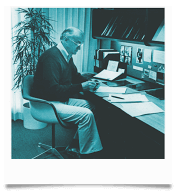
Bob Propst, inventor of the cubicle
An idealistic furniture designer with Herman Miller, Bob Propst is tragic hero of the modern office. He was a keen critic of the mid-century American workplace: “It saps vitality, blocks talent, frustrates accomplishment. It is the daily scene of unfulfilled intentions and failed effort.” His response was the Action Office a highly flexible, affordable furniture system designed to democratize the privacy a personal office offered. You probably know it as the cubicle. Before Propst died in 2000 roughly 40 million Americans — and many millions more elsewhere — were hard at work in more than 40 different versions of his design. Unmoored from his idealism, the cubicle became another instrument of corporate oppression, something that profoundly disappointed him. It’s long overdue a reinvention.
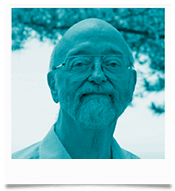
Jack Nilles, father of telecommuting
You don’t have to be a rocket scientist to understand the benefits of coworking, it just happens that it was a rocket scientist who coined the term. It was 1973 and Nilles was working the Univeristy of South California in an experimental program with an LA insurance firm that wanted to reduce overheads and churn among their data entry employees. Educated as a physicist, Nilles worked for the US Air Force and NASA, as well as advising JFK, his answer to the churn problem was a prototype of remote work involving satellite offices where employees would come and hook up mini computers to a mainframe. He went on to design telecommute projects for three states, the city of LA, European and South American governments as well as a number of Fortune 100 companies. He even got an award from LA authorities for helping them reduce traffic.

Wolfgang and Eberhard Schnelle, creators of the open plan office
Much of what we like about our workplace comes from the delightfully-named Hamburg suburb of Quickborn. It was there that brothers Wolfgang and Eberhard Schnelle grew bored with working at their father’s furniture business in the late 1950s. Striking out on their own they wanted an alternative to the regimented rows and closed doors that defined offices. They called their new proposal “office landscapes” (burolandschaft). They were told their open plan, free form, organic concept was insane. By 1967 it was being incorporated into the new World Trade Center.
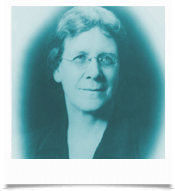
Katharine Cook Briggs, inventor of the world’s most influential personality test
Katharine Cook Briggs‘ famous invention was born of frustration. She found she couldn’t get a read on her daughter’s fiancé as they sat around the Christmas dinner table in 1917. He was inscrutable. It spurred the housewife and writer to study early analytical psychology where she came across the work of Carl Jung. She adapted his psycho-analytical theories for a popular audience and together with her daughter, Isabel, they developed a personality test which she named the Briggs Myers Type Indicator (MBTI). While it has its critics, the MBTI has become a rite of passage for many white collar workers and more than 50m people are estimated to have taken it.

Radia Perlman, mother of the internet (sort of)
The daughter of two engineers, her computer programming mother and a radar expert father, Perlman never took a math or science class that she didn’t top. Her signal accomplishment was the design of the spanning tree algorithm which transformed Ethernet from the original limited-scalability, single-wire CSMA/CD, into a protocol that can handle large clouds. It earned her the popular epithet of the “mother of the internet” a title she never liked. “I did indeed make some fundamental contributions to the underlying infrastructure,” she told The Atlantic magazine. “But no single technology really caused the Internet to succeed.” Her book Interconnections made a science of the murky field of network protocols. And her work had a profound impact on how networks self-organize and move data.
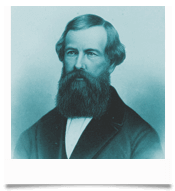
Elisha Otis, inventor of the safety elevator
Next time you ride an elevator to work think of the son of a Vermont farmer, Elisha Otis, who never saw the riches his ingenious invention would bring. His idea of deploying toothed rails inside shafts and springs atop the elevator cars made possible the first safety elevator. It was an invention that spurred the creation of skyscrapers and ushered in the modern world. He had a flair for the dramatic as he showed at P.T. Barnum’s Traveling World’s Fair in New York, where he rode up in his safety elevator and then slashed the retaining ropes with a sword to demonstrate. He had no flair for business and it was his sons who turned Otis into a global brand after his death.

Dan Bricklin, inventor of the spreadsheet
One night in 1978 a graduate student at the Harvard Business School sat up late with an assignment on a dummy marketing campaign. Unsatisfied by the analysis he could do with a calculator, he invented the spreadsheet. A year later VisiCalc would ship as the first ever killer app for the Apple II. Some would argue that Dan Bricklin deserves mention alongside names like Bill Gates or Steve Jobs. However you feel about working with them today, Bricklin’s spreadsheet idea was what got so many people to buy a computer for the first time.
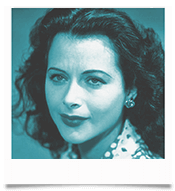
Hedy Lamarr, inventor of frequency hopping technology
“Any girl can be glamorous, all you have to do is stand still and look stupid.” – Hedy Lamarr
The most glamorous entrant on this list, the Austrian-American actor had a lesser known sideline in engineering. Born Hedwig Eva Maria Kiesler, she changed her name to Hedy Lamarr after leaving her first husband, a wealthy arms dealer to Nazi Germany. Settled in California as a movie start she teamed up with musician George Antheil to patent a communication system for torpedoes that switched frequencies, making it harder to detect. The “secret communications system”. It took decades for frequency hopping that she had pioneered to be adopted by the US Navy. It later formed the basis for spread spectrum communication tech, or WIFI as we know it.
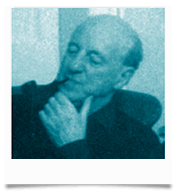
Tom Burns, conceived the idea of “company culture”
The Scottish academic and one of the most original thinkers on organizational theory. In his landmark work in 1961, The Management of Innovation, he showed how innovative organizations depended on informal, horizontal linkages which didn’t figure in the organization charts of hierarchical, vertically organized firms. He predicted (correctly) that these organic organizations would outlast their mechanistic counterparts. And he coined the term company culture while he was at it. It denoted “a dependable constant system of shared beliefs.” Decades ahead of his time and intent on linking his work to the business world, his legacy, if not his name, lives on.
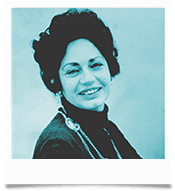
Bette Nesmith Graham, inventor of liquid paper
The relationship between necessity and invention has rarely been clearer than in the case of Nesmith-Graham. As with all secretaries working with typewriters in the 1950s, she was frustrated that a single mistake meant doing over an entire page. While working as executive secretary at a Texas bank she noticed how the decorators painted over their mistakes and it got her thinking. The product of those thoughts was one of the greatest office inventions of the 20th century — liquid paper. By the time she sold Graham Liquid Paper to Gillette Corp. in 1979 it was shipping one million units a year.
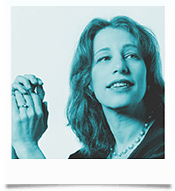
Susan Kare, pioneering computer iconographer
Pretty much anyone who has opened a computer, clicked an icon or typed anything has benefited from the work of Susan Kare. Created with “mosaic-like precision” the genius of her work is that the user could usually work out the function of her icons immediately. She has explained her phenomenal impact on graphic design by saying that her approach was to treat visuals more like road signs than illustrations. Kare joined Apple as the font designer for the original Macintosh and went on to do important work for Microsoft and IBM. If you’re reading this on a latter-day Mac look at your command key — it’s a Kare creation. These days you can find her work in the The Museum of Modern Art in New York.

Jim Harding, world’s leading wayfinder
Ever taken a flight as part of a business trip? Ever wondered how you know where you’re going when navigating the airport? When Jim Harding does his job properly — which he invariably does — you won’t notice. Or as he told writer David Zweig, “What great signs they have here! I found everything so easily,” said no one, ever. Harding is arguably the world’s leading wayfinder, the designer at Atlanta’s Maynard Jackson Terminal (the word’s busiest). A mix of discipline, logic and subconscious cues, airport wayfinders almost always work with just three fonts, Helvetica, Frutiger, and Clearview. Harding who has done similar jobs for corporate headquarters and hospitals says that the invisibility of his work is the hallmark of its success.
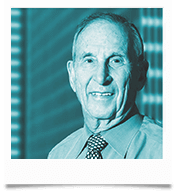
Arthur Rock, the original venture capitalist
The midwife to the birth of Silicon Valley, Arthur Rock can legitimately be thought of as the first modern venture capitalist. He was the one who delivered a rebellious group of semiconductor scientists to the industrialist Sherman Fairchild in 1957, creating Fairchild Semiconductor — a company so important that Intel and AMD are referred to as “fairchildren”. Rock was the New York banker who eventually moved to San Francisco to connect east coast money with west coast tech. An early investor in Intel, he’s best known for his role at Apple where he mentored Steve Jobs. The most famous individual on this list (featured on the cover of Time in 1984), he’s largely known now as a cameo character in the Steve Jobs story. Asked by the Wall St Journal if he had an iPad or iPhone, he replied: “I’m too old for that. [And] I don’t have a Twitter account or a Facebook account.”
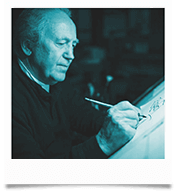
Rev. Robert Palladino, influencer of modern fonts
Certainly the only Trappist monk to make the list. Father Palladino became one of the world’s leading authorities on calligraphy while under an oath of silence — a subject he went on to teach at Reed College in Portland, Oregon. Steve Jobs was briefly a student at Reed and dropped in on Father Palladino’s class. This is what he told a Stanford class about it year’s later: “If I had never dropped in on that single course in college, the Mac would have never had multiple typefaces or proportionally spaced fonts. And since Windows just copied the Mac, it’s likely that no personal computer would have them.” When asked by a reporter recently he admitted that for all his undoubted impact on typography in personal computing, he had never owned or used a computer.
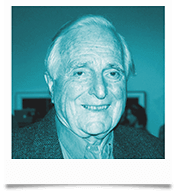
Doug Engelbart, inventor of the mouse
Sometimes when we say visionary we mean it. Douglas Engelbart was a visionary. Aged 15, in 1950 (when a computer was bigger than a room) he had a vision of a computer screen with different symbols that acted as a workstation for all the information in a project. By 1968 after working on the tab of the defense department he made a revelatory presentation to his peers at a computing conference in San Francisco. On a 22ft projected screen, Engelbart demonstrated text editing, video conferencing, hypertext and windowing. And he did it all using something he’d invented four years earlier — the mouse. For years after it was talked of in Silicon Valley as “the mother of all demos”. For good measure he also invented the concept of “boot-strapping”.
Frequently asked questions
- Who is Bob Propst and why is he significant?
- Bob Propst was an innovative furniture designer associated with Herman Miller. He is known for inventing the cubicle, a flexible and affordable furniture system designed to democratize the privacy offered by personal offices. Despite its initial idealistic intentions, the cubicle eventually became a symbol of corporate oppression.
- What is Jack Nilles known for?
- Jack Nilles, a physicist who worked for the US Air Force and NASA, is recognized as the father of telecommuting. In 1973, he developed a prototype for remote work involving satellite offices where employees could connect mini computers to a mainframe. His work led to the design of telecommute projects for various states, cities, and Fortune 100 companies.
- What did Wolfgang and Eberhard Schnelle contribute to the workplace?
- The Schnelle brothers, Wolfgang and Eberhard, are credited with creating the open plan office. Dissatisfied with the traditional office layout, they proposed "office landscapes" (burolandschaft), an open plan, free form, organic concept that was initially considered insane but was later incorporated into major structures like the World Trade Center.
- Who is Katharine Cook Briggs and what is her invention?
- Katharine Cook Briggs, along with her daughter Isabel, developed the Briggs Myers Type Indicator (MBTI), the world's most influential personality test. The test, which has been taken by over 50 million people, was born out of Briggs' frustration with understanding her daughter's fiancé's personality.
- What is Radia Perlman's contribution to the internet?
- Radia Perlman, an engineer, is known for designing the spanning tree algorithm that transformed Ethernet into a protocol capable of handling large clouds. Her work had a profound impact on how networks self-organize and move data, earning her the popular title of the "mother of the internet."




